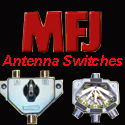Changes to 60 meters band for U.S. operators
Discussion in 'Amateur Radio News' started by N9DSJ, Nov 19, 2011.
- Thread Status:
- Not open for further replies.
Page 1 of 6
Page 1 of 6
- Thread Status:
- Not open for further replies.










